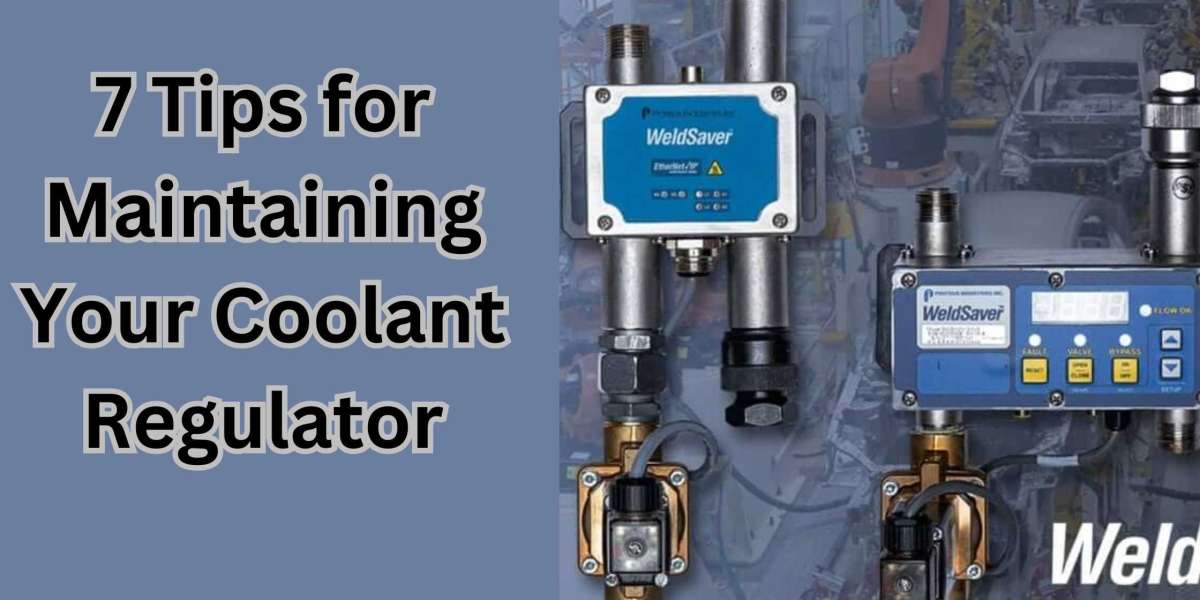As an essential component of your industrial machinery, the coolant regulator is crucial in maintaining optimal temperatures and ensuring smooth operations. Neglecting its maintenance can lead to costly downtime and potential damage to your equipment. Here are seven expert tips to help you keep your coolant regulator in top condition.
Regular Inspection and Cleaning
Start by visually inspecting the coolant regulator for any signs of leaks, corrosion, or buildup. Cleanliness is critical to proper functioning so all components are free from dirt, debris, and contaminants. Use manufacturer-recommended cleaners and solvents for effective cleaning without damaging sensitive parts.
Monitor Coolant Levels
Check the coolant levels regularly and top up as needed to maintain the proper volume. Low coolant levels can result in overheating and inefficient cooling, leading to potential system failures. Follow the manufacturer's guidelines for the correct type and concentration of coolant to ensure optimal performance.
Check for Leaks
Leaks in the coolant regulator can lead to loss of coolant and compromised cooling efficiency. Inspect all connections, hoses, and seals for any signs of leaks and repair them promptly to prevent further damage. A proactive approach to leak detection can save you from costly repairs.
Calibrate as Necessary
Over time, the coolant regulator may require calibration to maintain accurate temperature control. To ensure precise operation, periodically check and calibrate the regulator according to the manufacturer's specifications. Proper calibration helps prevent overheating or overcooling your equipment, prolonging its lifespan.
Lubricate Moving Parts
Ensure that all moving parts of the coolant regulator are properly lubricated to reduce friction and wear. Use high-quality lubricants recommended by the manufacturer to ensure smooth operation and prevent premature failure. Regular lubrication extends the lifespan of the regulator and enhances its performance.
Insulate Pipes and Components
Proper insulation of pipes and components connected to the coolant regulator helps minimize heat loss and maintain consistent temperatures. Inspect insulation regularly for any damage or wear and replace it as needed to ensure adequate thermal insulation. Proper insulation improves energy efficiency and reduces operating costs.
Schedule Professional Maintenance
In addition to regular inspections and maintenance tasks, schedule professional servicing of the coolant regulator at recommended intervals. Experienced technicians can identify potential issues early on and perform thorough maintenance to keep the regulator functioning optimally. Professional servicing also ensures compliance with safety standards and regulations.
Read More: Exploring the Benefits of Coolant Valves
Conclusion
Proper maintenance of your coolant regulator is essential for ensuring efficient cooling, preventing equipment failures, and maximizing productivity. By following these seven tips and addressing common maintenance issues promptly, you can prolong the lifespan of your equipment and avoid costly downtime. Remember to schedule regular inspections and professional servicing to keep your coolant regulator in top condition.
Frequently Asked Questions (FAQs)
What is a coolant regulator, and how does it work?
A coolant regulator is a device that controls the flow and temperature of coolant in industrial machinery to maintain optimal operating conditions. It regulates the coolant flow based on the temperature requirements of the equipment.
Why is maintaining a coolant regulator important?
Maintaining a coolant regulator is crucial to ensure efficient cooling, prevent overheating, and prolong the lifespan of industrial equipment. Neglecting maintenance can lead to costly downtime and repairs.
How often should coolant levels be checked?
Coolant levels should be checked regularly, ideally during routine equipment inspections. Checking coolant levels weekly or monthly is recommended, depending on usage and environmental conditions.
What are the common signs of a malfunctioning coolant regulator?
Common signs of a malfunctioning coolant regulator include erratic temperature fluctuations, coolant leaks, decreased cooling efficiency, and unusual noises from the equipment.
Can I use any coolant with my regulator?
It's essential to use the coolant type recommended by the manufacturer to ensure compatibility and optimal performance. Using the wrong kind of coolant can lead to damage and decreased efficiency.
How can I prevent coolant leaks in my system?
Prevent coolant leaks by regularly inspecting connections, hoses, and seals for signs of wear or damage. Replace any worn components and ensure proper tightening of connections to prevent leaks.
Is it necessary to calibrate the coolant regulator regularly?
Regular calibration of the coolant regulator is necessary to maintain accurate temperature control and ensure proper functioning. Follow the manufacturer's guidelines for calibration intervals.
What are the benefits of proper insulation for coolant system components?
Proper insulation helps minimize heat loss, maintain consistent temperatures, and improve energy efficiency. It also prevents condensation and reduces the risk of corrosion in the system.
Can I perform maintenance tasks on the coolant regulator myself?
While some maintenance tasks, such as visual inspections and cleaning, can be performed by operators, specific tasks, such as calibration and professional servicing, require specialized knowledge and tools.
How can I find a reliable technician for servicing my coolant regulator?
Look for technicians with experience and expertise in servicing industrial equipment, preferably those certified by the manufacturer. Ask for recommendations from colleagues or industry associations.








